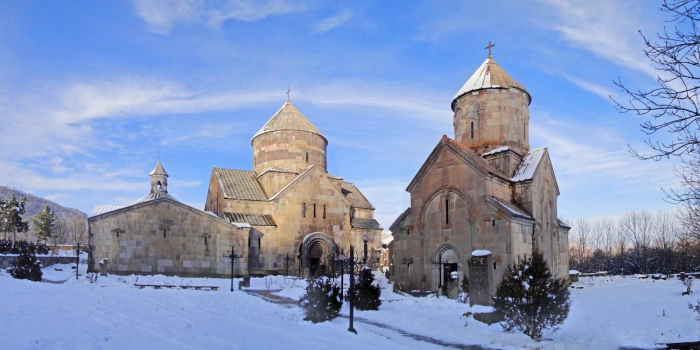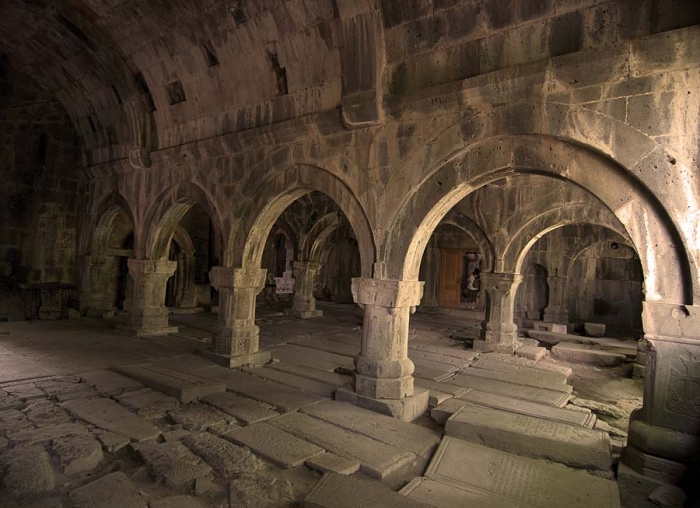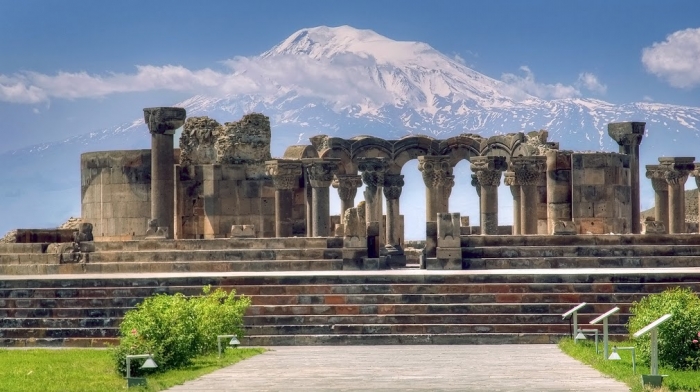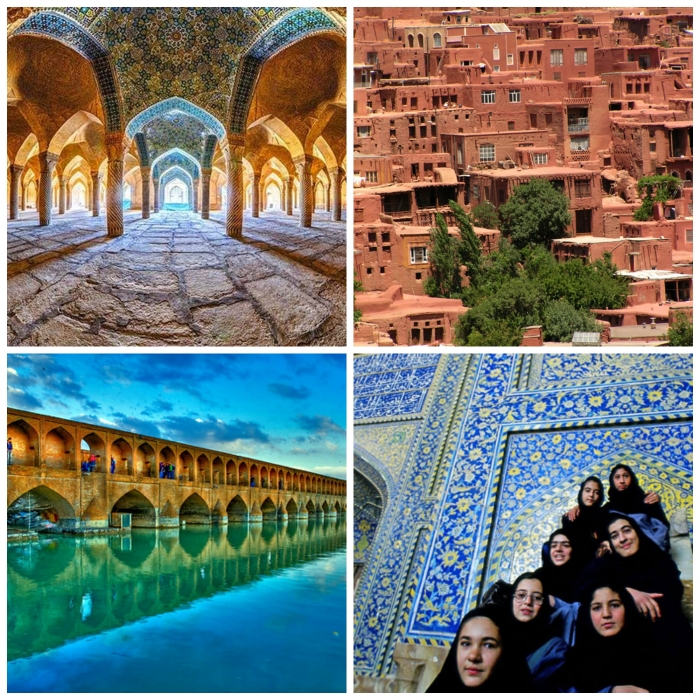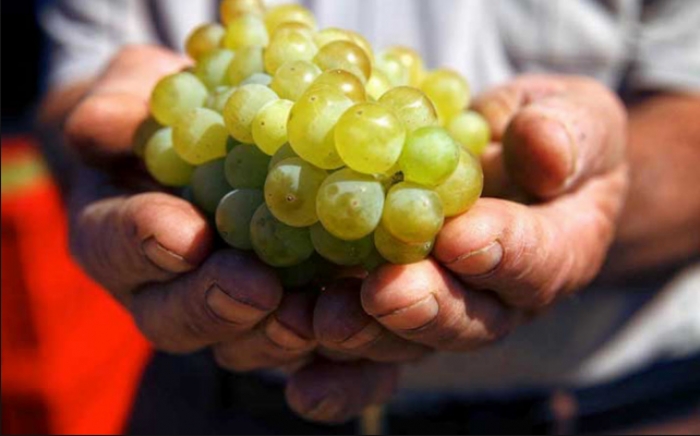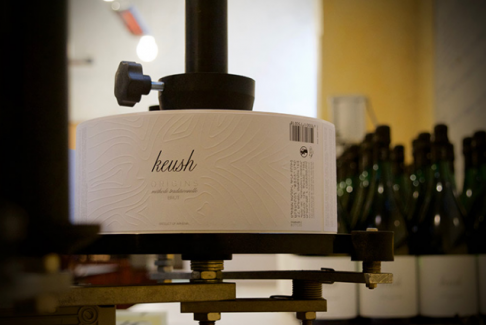History in a Glass: (Re)discovering Armenian Wine
Armenia holds a remarkable depth and diversity of cultural and natural landscapes, all within an area approximately the size of the state of Maryland. This diversity and richness is evident in music, cuisine, art, and—increasingly—Armenia’s burgeoning wine industry.
What makes a wine Armenian? I posed this question to Irina Ghaplanyan and Vahe Keushguerian, two wine professionals passionate about the country’s current wine renaissance. Ghaplanyan represents Vineyards of Armenia, a group of almost a dozen winemakers from across the country, including both boutique and large-scale wineries. Keushguerian is a winemaker and the owner of Semina Consulting, a winery consultancy based in Yerevan. He has been involved in the wine industry for over twenty-five years, first in the San Francisco Bay Area as a wine importer, then Tuscany, Puglia, and now Armenia.
Ghaplanyan and Keushguerian emphasized the unique grape varietals indigenous to Armenia and the country’s exceptional terroir, the characteristics that soil, weather, climate, and other environmental factors impart to the grapevines. Armenian wine is also connected across time with a more than six thousand-year-old history of viniculture.
In 2011, researchers from UCLA and the Armenian Institute of Archaeology and Ethnography discovered the oldest winemaking facility in the world, dating from approximately 4100 BCE. This Areni-1 cave complex sits at the mouth of a gorge leading to the medieval Noravank monastery, at the outskirts of Areni village.
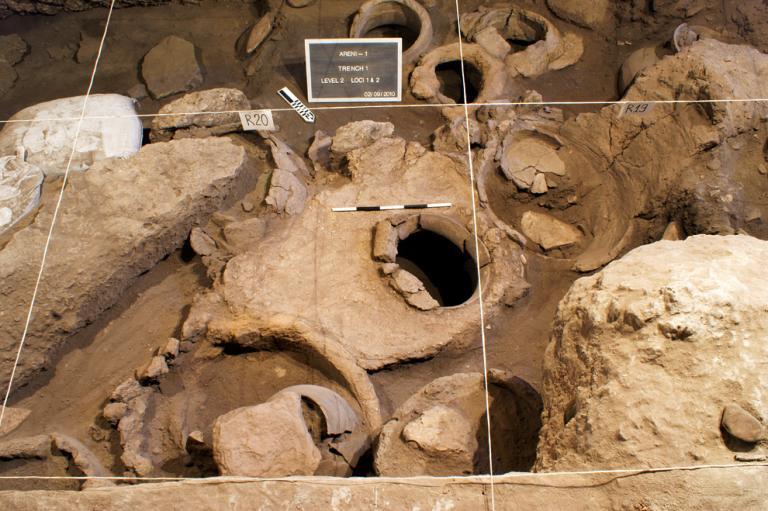
The discoveries at Areni-1 place Armenia at the fore of an emerging “Historic World” of wine, including Georgia, Iran, Israel, Lebanon, Turkey, Jordan, and Syria. Working with Historic World colleagues, Armenian wine geneticists, archaeologists, and producers are rediscovering ancient varietals that are the ancestors of today’s wine varietals. In a region fraught with conflict, this is a kind of “wine diplomacy,” bridging contemporary geopolitical borders.
Ghaplanyan and Keushguerian recently traveled to northwestern Iran, near the Hajji Firuz site where the oldest winemaking related evidence has been discovered, to search for grape varietals in abandoned vineyards.
“Genetic analysis found that four of these varietals had unique genotypes, which is fascinating, and another clue to understand the period of grapevine domestication, and also the way it began migrating to Europe,” Ghaplanyan remarks. These discoveries may “explain how they migrated and the links between the current European varietals and the varietals we have here.”
Armenian grape varietals, like Areni, Kakhet, Voskehat, Khatun Kharji, Movuz, Sireni and Chilar, are still relatively unknown outside of the region. Indigenous to the area and distinct from both the European Old World and New World varietals, these are the grapes that, as Keushguerian puts, “would perplex a wine professional.” He continues, “Their flavor profile is different than what you’re used to—not too different, but distinct. The sensation is different.”

Ghaplanyan and Keushguerian are propagating many of these vitis vinifera varietals in nurseries. They grow rediscovered varietals and produce wine in a process called “microvinification,” creating wines from very small batches of grapes to learn more about the different flavor profiles possible from these ancient grape types. One of their discoveries is the sheer number of flavor profiles possible from only one varietal.
“If you compare different grapes, there’s usually a set amount of flavor profiles that a grape can produce,” she explains. “With the Voskehat grape, the aroma profiles and complexity are much higher than average. It is also a very terroir-driven grape. In 2013, a colder year, it acquired a very stone fruit flavor, very peachy, apricot. 2014 was a lot warmer, so we had tropical notes from banana to pineapple to passion fruit.”
Situated at the intersection of the European and Arabian tectonic plates, Armenia has frequent seismic activity. The resulting volcanic soil is ideal for grape cultivation, enriching terroir. Georgian wines also benefit from this soil type, but Armenia’s higher elevation and extreme continental climate distinguishes its grapes. Ghaplanyan says very hot summers and very cold winters give the grapes boldness and “a certain maturity.”

Armenia’s extreme climate is surprising when you consider its latitude—roughly the same as Sicily and Mt. Etna. The Armenian highlands produce a range of microclimates, and diverse grapes grow from the lowest elevations of 2,000 feet above sea level to the highest at 5,700, where Keushguerian grows the grapes for his Keush sparkling wine.
“What we’re doing is something like ‘extreme winemaking,’” he says. “We are pushing the limits of the frontier. Armenian vineyards are some of the highest in the northern hemisphere, apart from one small patch of vineyard in Colorado.”
This elevation also breeds a high concentration of polyphenols. These chemicals, which may be linked to prevention of degenerative diseases, lend Armenian wine “a higher structure, a certain je ne sais quoi … a certain elegance similar to northern Italian wines,” as Keushguerian describes.
The extreme climate also breeds grapes with high acidity, so there is no need to add tartaric acid during the winemaking process, which is common with wines of the New World. High acidity without additives made early winemaking possible, when early inhabitants of the South Caucasus may have used wines for ritual purposes.
Winemaking in Armenia dates from at least 4100 BCE to the present day, but Armenian viniculture has been disrupted throughout history by imperial conquests, political revolutions, and shifts in society. During Soviet times, and especially when Stalin came to power in the 1930s, the government asked Armenian winemakers to shift production toward cognac and European-style fortified wines (i.e. sherry, madeira) instead of table wines. This system rewarded quantity rather than quality.
“We can give one credit to the Soviets,” Ghaplanyan reminds. “They created collective nurseries, where they would preserve the historic varietals. They didn’t industrially use them because they weren’t as weather resistant, but they didn’t ignore them. They had a collection which we lost during the collapse of the Soviet Union.”
Instability, privatization, and conflict characterized this collapse in the late 1980s and early 1990s, and the wine industry lay dormant for years. The vineyards, which need steady and constant care, fell into neglect until the late 1990s.
Since 1998, they and their fellow winemakers have been rebuilding and expanding the Armenian wine industry, and today there is a renaissance. The 2010 vintage was a watershed year, and Yerevan now boasts almost a dozen wine bars, while Armenian wines are appearing on global top ten lists.

Ghaplanyan and Keushguerian see this evolving industry as a boon to local communities. As wine quality improves, so does the value of the final product and the grapes themselves. Within a more profitable economy, many farmers who have been steadily leaving for work in Russia might be able to afford to stay on their land. In marginal plots of land, on hillsides dotting the Armenian highlands, winemakers, communities, and families are cultivating the future of Armenia—by revisiting and reinterpreting its historic grapevines.
Vahe Keushguerian and Irina Ghaplanyan will present a selection of Armenian wines with the Smithsonian Associates on May 18, including a tasting of Voskehat.
Rebecca Wall is a historian and fellow with the Smithsonian’s Office of International Relations, where she works on international programs including My Armenia.
Source: www.folklife.si.edu




